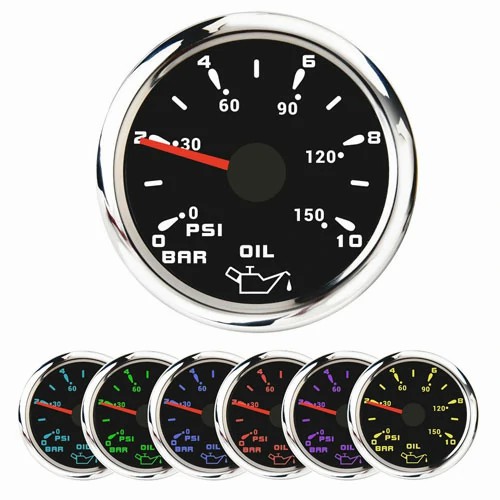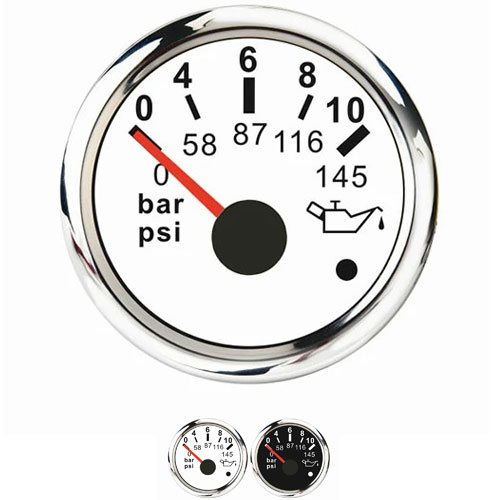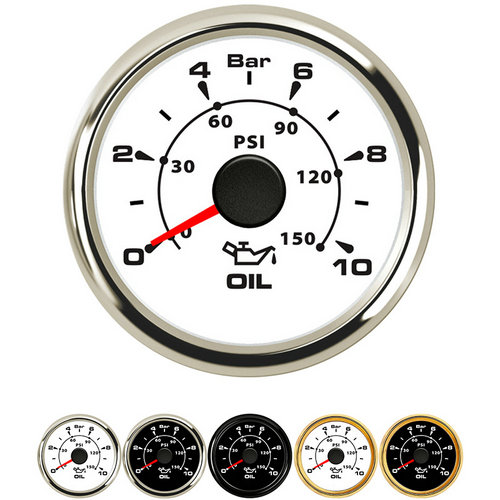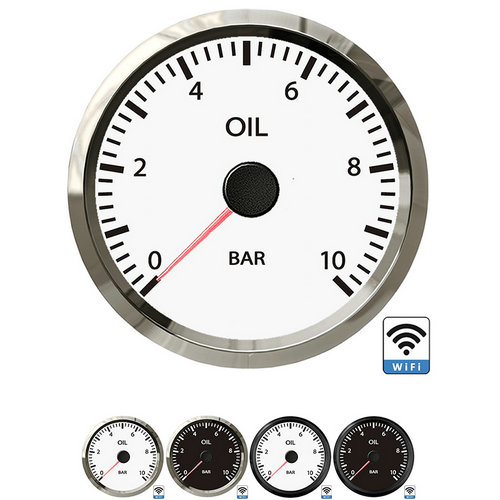oil pressure gauge purpose
The oil pressure gauge is used to indicate the engine oil pressure in order to know whether the engine lubrication system works normally. It is composed of an oil pressure sensor installed on the main oil passage of the engine and an oil pressure indicator on the instrument panel. There are three kinds of commonly used oil pressure gauges: bimetallic plate electromagnetic type and dynamic magnetic type. Bimetallic oil pressure gauge is the most widely used. The following is the working purpose of the oil pressure gauge
1 is connected with the main oil passage of the engine, and the oil pressure can directly act on the diaphragm. The upper part of the diaphragm is against the bow spring sheet 3. One end of the spring sheet is fixedly grounded with the shell, and the contact at the other end is in contact with the end contact of bimetallic. An electric heating coil is wound on the bimetallic sheet, The correction resistor 8 is connected in parallel with the coil on the bimetallic. The oil pressure indicator is equipped with a bimetallic sheet 11 with a special shape. The end of its straight arm is fixed on the adjusting gear fan 10. The end of another hook shaped cantilever is connected with the pointer 12, which is also wound with an electric heating coil. The two ends of the coil form two terminals of the indicator.When the power switch is turned on, the current is indicated by the positive pole of the battery → the terminal 14 of the power switch hot wire coil → terminal 9 → contact piece 6 → divided into two paths (one path flows through the electrothermal coil of sensor bimetallic sheet 4; the other path flows through correction resistance 8 → bimetallic sheet 4) → contact of bimetallic sheet 4 → spring sheet 3 → grounding → battery negative pole forms a loop. As the current flows through the electric heating coils on the bimetallic sheets 4 and 11, the bimetallic sheets are heated and deformed. Bimetallic sheet is made of two metals with different expansion coefficients. When heated, the side with large expansion coefficient bends towards the side with small expansion coefficient.
When a current passes through the circuit, the coil wound on the bimetallic sheet generates heat, causing the bimetallic sheet of the sensor to be heated and bent, causing the contact to break open cut circuit: the bimetallic sheet of the indicator is bent to deflect the pointer to indicate the oil pressure. When the oil pressure is very low the diaphragm 2 is almost flat without deformation, and the pressure acting on the contact is very small at this time.When the current flows through and the temperature rises slightly, the bimetallic sheet 4 is heated and bent to separate the contacts, cut off the circuit and stop generating heat: after a period of time, the bimetallic sheet cools and straightens, the contacts are closed and the circuit is connected again. Therefore, the closing time of the contact is short and the opening time is long. The average current value of the electric heating coil of the indicator is small, so that the bending degree of the bimetallic sheet 11 of the indicator is small due to the low temperature, and the deflection angle of the pointer 12 is very small, that is, it indicates a low oil pressure.

 English
English 






Get a Quote / Info